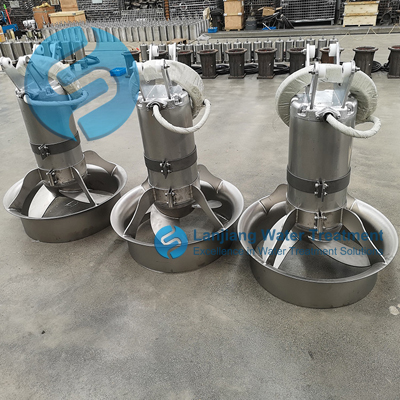
Sewage treatment equipment in the long-term use of the process, may encounter a variety of failure reasons, these reasons mainly involve the equipment itself, improper operation, maintenance is not in place. The following are some common causes of failure and the corresponding treatment methods:
First, common failure causes
1. The water inlet pipe is faulty
- Blockage: blockage caused by deposition or stagnation of incoming debris (such as sand, soil, rust, organic debris, etc.) in the pipeline.
- Insufficient inlet pressure: This can be caused by a faulty pump or broken pipe, wear and tear of the internal components of the pump, aging, or power supply problems.
- Unqualified water quality: Water source pollution or pre-treatment equipment failure, such as filter, sedimentation tank, disinfection device failure, resulting in reduced water quality.
2. The aeration system is faulty
- Aeration equipment does not work properly: such as motor failure, aeration pipe blockage or leakage.
- Insufficient aeration: The oxygen supply is insufficient due to the blockage of the aerator head and the failure of the aerator.
3. The water outlet is faulty
- Blockage: long-term accumulation of dirt at the water outlet leads to blockage, affecting the normal operation of the equipment and the effect of sewage treatment.
4. The filter is blocked
- The dirt on the filter gradually accumulates over time, leading to the blockage of the filter screen and reducing the treatment effect of the equipment.
5. The device makes excessive noise
- May be caused by pipe blockage, improper installation of belt cover, wear of motor bearings, etc.
6. The device heats up
- May be caused by overload operation, fan inlet filter blockage, fan internal grinding and other reasons.
7. Other mechanical failures
- Such as reducer vibration, noise is too large, the motor can not start or can not reach the rated parameters, lifting equipment braking is not reliable.
Second, treatment methods
1. Rectify water inlet pipe faults
- Clean and replace the intake pipe regularly to ensure that the pipe is unimpeded.
- Complete inspection and maintenance of pumps and piping systems, including inspection and replacement of pump impellers, bearings, motor windings, etc.
- Implement strict pre-treatment equipment maintenance and overhaul system to ensure water quality standards.
2. Troubleshooting of aeration system
- Check whether the power supply, motor and transmission device of the aeration equipment are working properly.
- Clean aeration lines and aeration heads, repair or replace faulty components.
- Adjust the aeration rate to the appropriate range to ensure adequate oxygen supply.
3. Troubleshoot the water outlet fault
- Clean water outlet dirt regularly to avoid clogging affecting equipment operation.
- For dirt with large solid particles, wash with water first and then treat it to avoid secondary pollution.
4. Filter blockage treatment
- Clean or replace the filter regularly to ensure that the filter is unimpeded.
- Increase the cleaning frequency according to the actual situation to maintain the cleanliness of the filter.
5. Handle excessive device noise
- Check the pipe for blockage and clean or replace the pipe.
- Adjust belt cover mounting position to reduce vibration noise.
- Replace worn motor bearings and check whether the oil supply system is normal.
6. Treatment of equipment heating phenomenon
- Check if the pipe is blocked and clean the air filter.
- Replenish the oil and check that the oil supply system is working properly.
- Reduce the load of overloaded equipment or upgrade the equipment performance.
7. Handle other mechanical faults
- Take appropriate measures according to the specific fault phenomenon and cause, such as adjusting the alignment of the unit, tightening loose bolts, replacing lubricating oil, etc.
- For complex faults that cannot be solved by themselves, professional maintenance personnel should be contacted in time for processing.
In summary, the common faults and treatment methods of sewage treatment equipment involve many aspects, and it is necessary to consider factors such as the problems of the equipment itself, improper operation and inadequate maintenance. Regular inspection and maintenance of equipment and timely handling of problems can ensure the normal operation of equipment and the efficiency and effect of sewage treatment.
Post time:2024-09-06